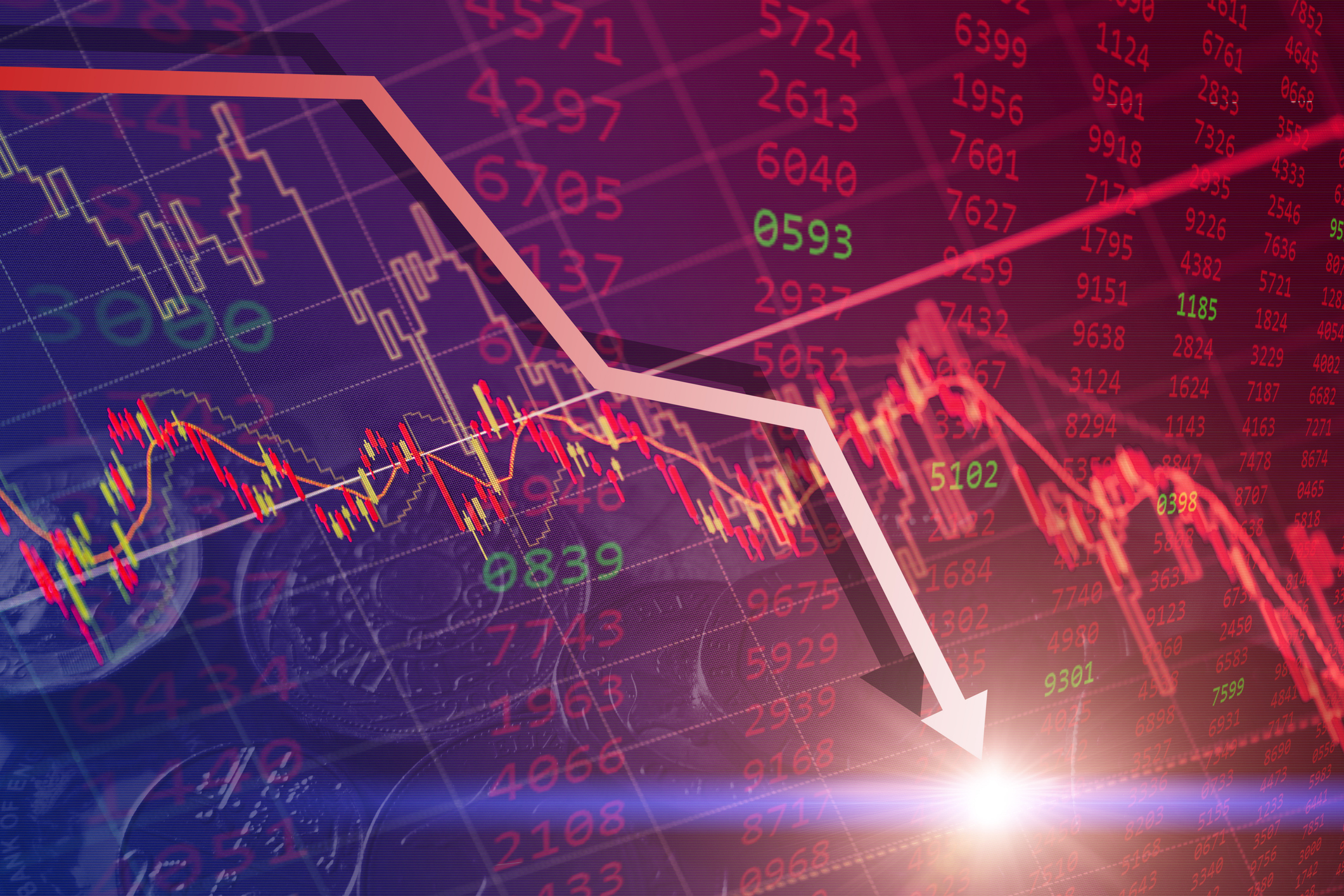Having Trouble Saving Money? 3 Tips for Young Professionals
Here’s how to leverage your savings rate to keep expenses in check and get on track for retirement.


Is it true that many young professionals don’t know how to save money?
I recently had dinner with an old college friend. I was expecting to catch up on friends, family and our careers, but it was clear he wanted some basic financial information.
Knowing I advise young professionals on their finances, he zeroed in on the following questions: “How much should I save, and how do I know if my savings plan is on track?”
From just $107.88 $24.99 for Kiplinger Personal Finance
Become a smarter, better informed investor. Subscribe from just $107.88 $24.99, plus get up to 4 Special Issues

Sign up for Kiplinger’s Free Newsletters
Profit and prosper with the best of expert advice on investing, taxes, retirement, personal finance and more - straight to your e-mail.
Profit and prosper with the best of expert advice - straight to your e-mail.
Many highly talented and bright young individuals – often earning six figures, receiving an annual bonus and holding stock options – often struggle with how to spend and save their money. My advice is to develop a process that focuses on three fundamental ideas that anyone can use.
Control Savings and Spending by Paying Yourself First
Putting together a budget and tracking spending are useful tools – but they can be tedious and hard to sustain. Instead of starting with expenses, I begin by allocating the desired amounts of money to various savings and investment accounts.
I set up automated contributions to my 401(k) retirement account, Roth Individual Retirement Account (IRA) and after-tax brokerage accounts. Once that money is set aside, I have total peace of mind knowing I can afford to spend what’s left and still be on track to hit my financial goals.
If, like me, you make the majority of day-to-day purchases on your credit card, another easy way to spot-check spending is making sure you can pay your credit card bill in full each month without tapping your savings.
Don’t get me wrong – developing a detailed budget is a valuable exercise when done periodically. And it’s particularly helpful if you are planning to buy a house or make another large purchase.
Tracking spending also helps you discover any unnecessary spending and unearth the cost of some of those expenses we often forget, such as subscription services or dining out more often than we think. If you find money tight month after month, be sure to review your online checking account to find ways to reduce costs before cutting back on your savings.
How Much Should I Save?
This answer differs for each person – a 29-year-old still making their mark in their career will have less money than a 40-year-old managing a team of professionals. In addition to cash flow, everyone will have different levels of expenses and goals. Some will have student loans, others will have young children, and some will want to retire by age 50.
A general rule of thumb I like is to try to save and invest at least 20%-25% of your gross income. For example, a person who earns $150,000 annually should consider contributing at least $30,000-$37,500 each year to their investment accounts. By making this commitment, your savings will grow quickly.
For example, after five years and an annual growth rate of 6%, a person contributing $30,000 annually will have saved approximately $169,113. After 10 years, that same person would have saved approximately $395,424.
While saving $30,000 per year may seem insurmountable at first, one of the easiest ways to get started toward this goal is to contribute to a 401(k) retirement account. In 2022, anyone 49 years old or younger can contribute up to $20,500.
In addition, many young professionals work for employers that will match a certain percentage of an employee’s contributions, giving you more incentive to invest and helping your money grow faster. After all, a dollar-for-dollar match from your employer is equivalent to an immediate 100% return on investment!
In addition to maxing out annual contributions to a 401(k), it may be advisable to consider the following:
- Set up an Emergency Fund. Aim to have enough funds to cover three to six months of living expenses in case of emergencies. We generally like high-yield online savings accounts for emergency funds since they’re easily accessible and pay a higher interest rate than most traditional checking/savings accounts.
- Contribute to a Health Savings Account. Individuals enrolled in a high-deductible health insurance plan can set aside up to $3,650 annually – $7,300 for family coverage – to cover expenses above and beyond what your health insurance pays. Contributions to this type of account are tax-deductible, grow tax-deferred and can be a withdrawn tax-free for health care expenses, ideally in retirement.
- Fund 529 College Education Savings Accounts. For those with young children, these accounts enable you to save money that will grow tax-free. In many states, some amount of these contributions can be deducted from state income taxes.
- Contribute to a Roth Individual Retirement Account (IRA). This is a long-term retirement account where any money contributed will grow tax-free for the rest of your life. The maximum amount that can be contributed to Roth IRAs this year is $6,000 for individuals younger than age 50 (the limit increases to $7,000 per year for those age 50 and over).
Time Is on Your Side
The sooner you are able to save and invest, the longer your money will be able to work for you. It’s easy to understand that a person who begins investing at age 30 will end up with more money than someone who begins at 35 or 40. But starting early also allows any savings to grow by compounding – the process whereby interest is credited to an existing principal amount as well as to interest already paid.
Albert Einstein referred to compounding growth as “the eighth wonder of the world. He who understands it, earns it; he who doesn’t, pays it.”
Going back to our previous example of saving $30,000 annually, after five years, the $150,000 contributed accounted for roughly 89% of the total $169,113 account value. Said another way, only 11% of the money saved was from investment growth. However, after 25 years of consistent saving and a 6% rate of return, that same person would have contributed a total of $750,000, but have an account value of $1,645,935, meaning more than half the account value was from compounding growth.
Even for those who might not have enough money to follow these guidelines right now, it’s important to get started at some level as soon as possible. If you can save 10% of your salary in a 401(k) account this year and take advantage of your company’s matching amount, you can build from there. The key is to begin a disciplined savings and investment plan that will provide money needed for retirement and lead to financial independence.
Profit and prosper with the best of Kiplinger's advice on investing, taxes, retirement, personal finance and much more. Delivered daily. Enter your email in the box and click Sign Me Up.

As an Associate Wealth Adviser at CI Brightworth, Jalen P. Randolph is passionate about helping high-earning professionals maximize their unique wealth-building opportunities through personal planning and advice. Prior to joining CI Brightworth, Jalen worked in both financial services and non-profit development. He earned his bachelor of science and master's of business administration degrees from the University of Delaware.
-
 Nasdaq Sinks 418 Points as Tech Chills: Stock Market Today
Nasdaq Sinks 418 Points as Tech Chills: Stock Market TodayInvestors, traders and speculators are growing cooler to the AI revolution as winter approaches.
-
 23 Last-Minute Gifts That Still Arrive Before Christmas
23 Last-Minute Gifts That Still Arrive Before ChristmasScrambling to cross those last few names off your list? Here are 23 last-minute gifts that you can still get in time for Christmas.
-
 The Rule of Compounding: Why Time Is an Investor's Best Friend
The Rule of Compounding: Why Time Is an Investor's Best FriendDescribed as both a "miracle" and a "wonder," compound interest is simply a function of time.
-
 If You're a U.S. Retiree Living in Portugal, Your Tax Plan Needs a Post-NHR Strategy ASAP
If You're a U.S. Retiree Living in Portugal, Your Tax Plan Needs a Post-NHR Strategy ASAPWhen your 10-year Non-Habitual Resident tax break ends, you could see your tax rate soar. Take steps to plan for this change well before the NHR window closes.
-
 Your Year-End Tax and Estate Planning Review Just Got Urgent
Your Year-End Tax and Estate Planning Review Just Got UrgentChanging tax rules and falling interest rates mean financial planning is more important than ever as 2025 ends. There's still time to make these five key moves.
-
 What Makes This Business So Successful? We Find Out From the Founder's Kids
What Makes This Business So Successful? We Find Out From the Founder's KidsThe children of Morgan Clayton share how their father's wisdom, life experience and caring nature have turned their family business into a respected powerhouse.
-
 I'm a Financial Adviser: The Fed's Rate Cuts Could Have Impacts You Might Not Anticipate
I'm a Financial Adviser: The Fed's Rate Cuts Could Have Impacts You Might Not AnticipateUnderstanding how lower interest rates could impact your wallet can help you determine the right financial moves to make.
-
 Past Performance Is Not Indicative of Your Financial Adviser's Expertise
Past Performance Is Not Indicative of Your Financial Adviser's ExpertiseMany people find a financial adviser by searching online or asking for referrals from friends or family. This can actually end up costing you big-time.
-
 I'm a Financial Planner: If You're Not Doing Roth Conversions, You Need to Read This
I'm a Financial Planner: If You're Not Doing Roth Conversions, You Need to Read ThisRoth conversions and other Roth strategies can be complex, but don't dismiss these tax planning tools outright. They could really work for you and your heirs.
-
 Could Traditional Retirement Expectations Be Killing Us? A Retirement Psychologist Makes the Case
Could Traditional Retirement Expectations Be Killing Us? A Retirement Psychologist Makes the CaseA retirement psychologist makes the case: A fulfilling retirement begins with a blueprint for living, rather than simply the accumulation of a large nest egg.
-
 I'm a Financial Adviser: This Is How You Can Adapt to Social Security Uncertainty
I'm a Financial Adviser: This Is How You Can Adapt to Social Security UncertaintyRather than letting the unknowns make you anxious, focus on building a flexible income strategy that can adapt to possible future Social Security changes.